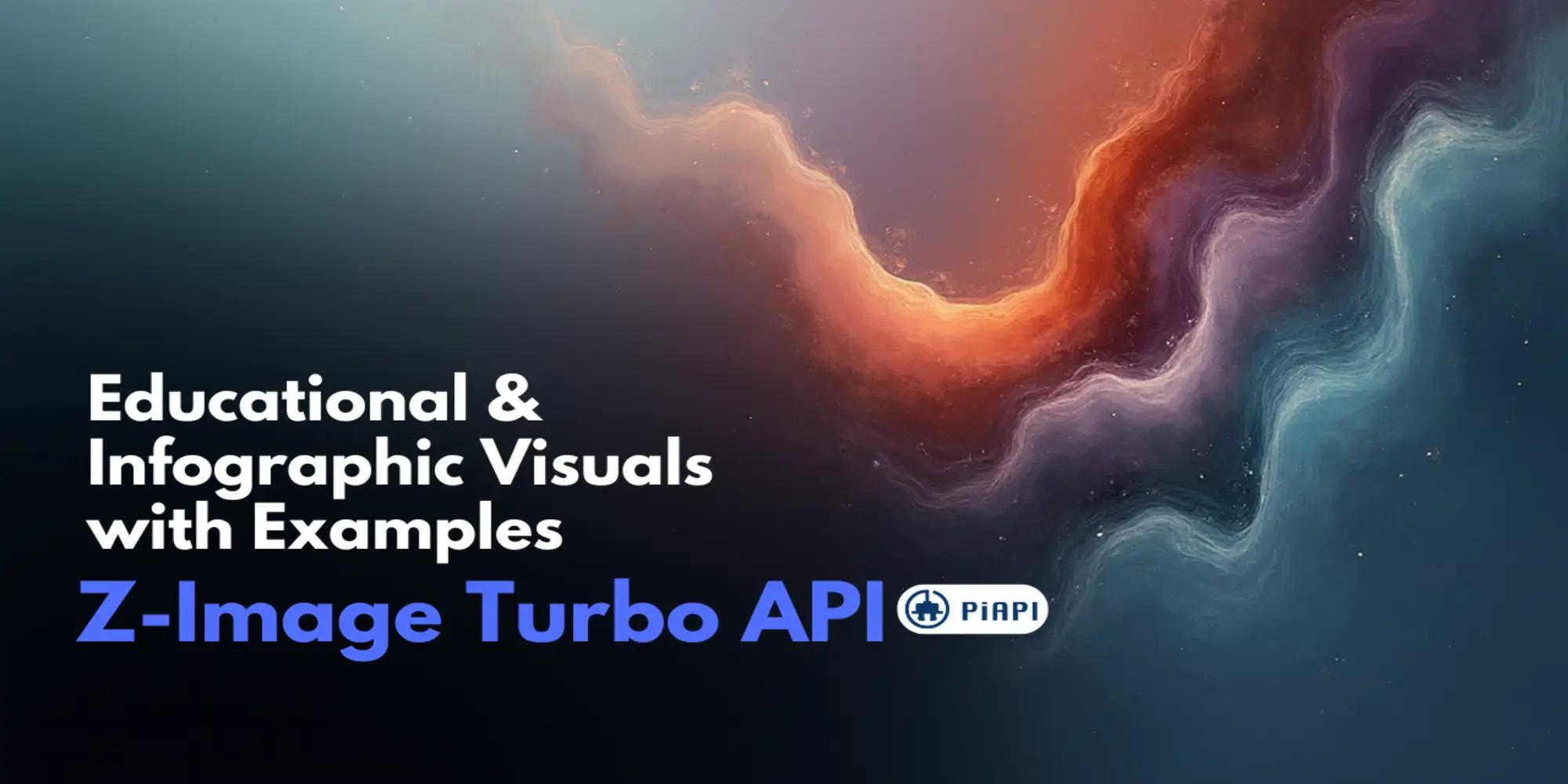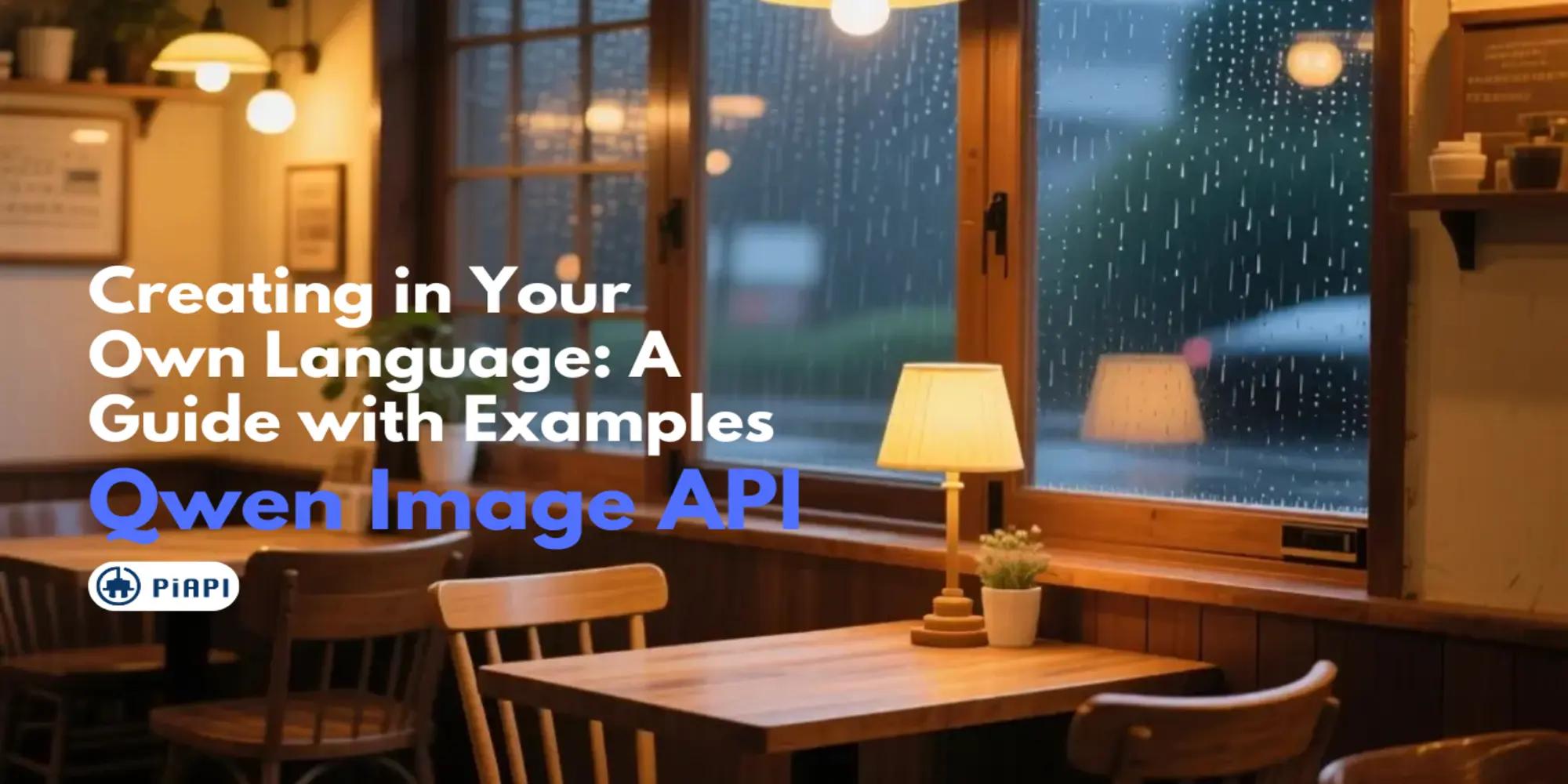Crush it Melt it through Pika API , Kling API & Luma API

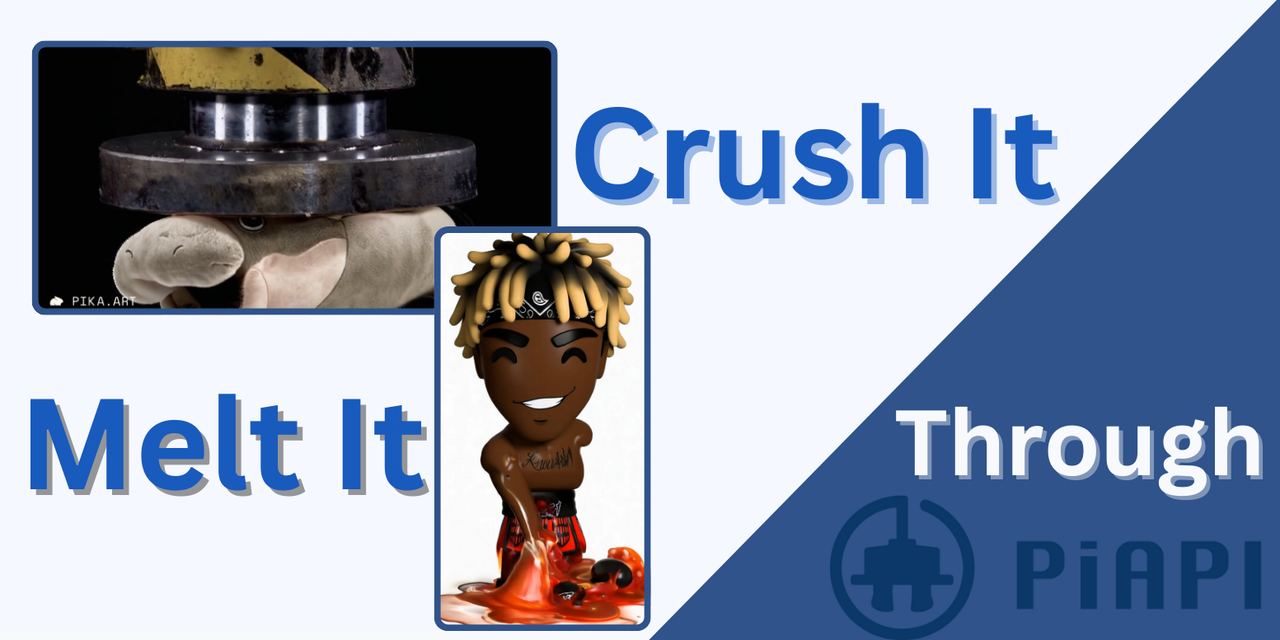

Introduction
On October 1st 2024, Pika Labs officially announced the release of Pika 1.5, claiming their model now has more realistic movements and big screen shots.
But the most exciting and popular addition is the new Pikaffects feature, which lets you create effects that "break the laws of physics" with the click of a button, no text prompt needed.
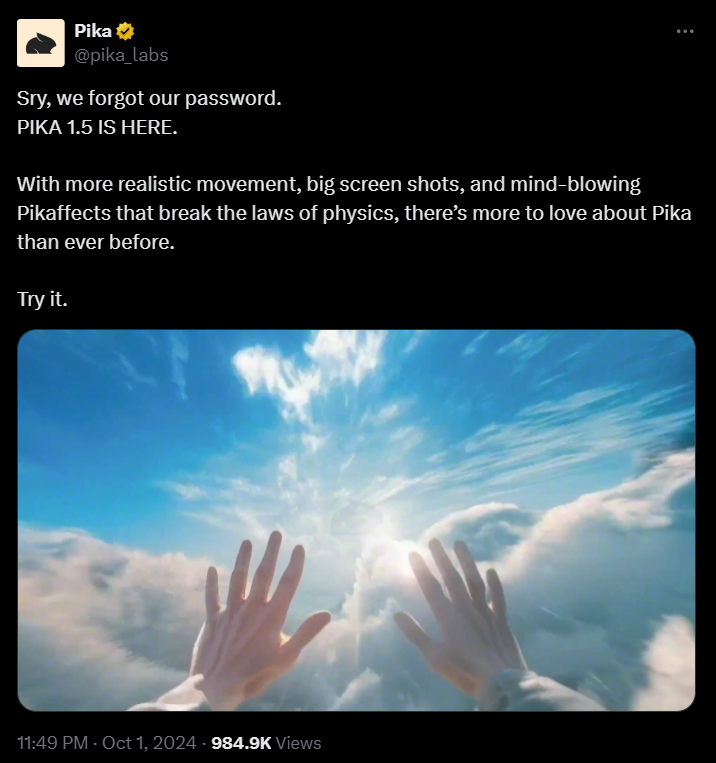
The "Crush it Melt it" trend has taken off on social media, with Pika's official video alone racking up nearly 14 million views on TikTok in the past week. Other videos following the trend have pulled in between 100,000 and 1 million views each.
As the leading AI API provider, we at PiAPI are also deciding whether we should launch Pika API, since we already offer Kling API and Luma API. As part of this decision-making process, we looked at the new "Crush it Melt it" trend and tried to replicate the effect and compare the results between Pika API, Kling API, and Luma's Dream Machine API.
Comparisons
But before we start comparing the three different AI models, let us first establish our comparison method.For Pika 1.5 API, we will simply apply the corresponding Pikaffect. For Kling API and Luma API, we'll try to replicate the Pika Art API effect by testing a variety of prompts and selecting the best result for the comparison.
Example 1: Crush it
For our first example, we are going to use the Moo Deng Hippo Plushie. Seeing as this trend has been popular with plushies and figurines, we thought we'd try using them as well and see what results we get.
Below is an image of the Moo Deng Hippo Plushie, which we’ll use alongside unique "Crush It" prompts or the Crush It Pikaffect as input for the three AI models we are going to compare.

And here are the output videos of the three different AI models, with the prompts used shown in the description.

Pika
Pika's output is the most impressive, with the hydraulic press smoothly crushing the Moo Deng Plushie, aligning with the Pikaffect "Crush It" prompt. The video shows fluid and dynamic movements as the hydraulic press crushes the plush, resulting in a realistic final result with no artifacts.
Kling
Kling's output ranks second overall, though it doesn't fully adhere to the prompt. Instead of a hydraulic press crushing the Moo Deng Plushie, it has a strange metal object crushing it. The video is fluid and dynamic, but the plushie exhibits strange unrealistic movements, with its body twitching and shaking. On the plus side, there are no visible artifacts.
Luma
Luma's output was by far the worst, not adhering to the prompt at all. There was no hydraulic press even though it was specified in the prompt, instead the Moo Deng Plushie fell over and morphed into something unrecognizable. The whole thing felt unrealistic, especially with the plushie’s random transformation. Also, an artifact appeared when it fell onto what looked like an iron table, even though the prompt never mentioned any kind of table.
Overall, Pika's output far outshines Kling or Luma in the "Crush It" test.
Example 2: Melt it
For our second example, we are going to use a figurine of the popular YouTuber KSI.
Below is an image of the KSI figurine, which we’ll use alongside unique "Melt It" prompts or the Melt It Pikaffect as input for the three AI models we are going to compare.

And here are the output videos of the three different AI models, with the prompts used shown in the description.
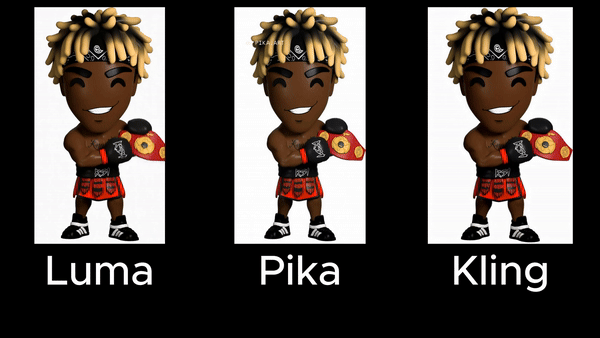
Pika
Pika delivers an impressive result with the KSI figurine melting realistically, and the final touch of the shoes melting last is a nice addition. The motion is fluid and dynamic, with the entire melting process feeling realistic.
Kling
Kling's video is pretty well made, showing the KSI figurine's head melting first, but the issue is that it doesn't turn into a puddle as the prompt described. The way the melting process moves and flows feels natural, closely following real-world physics.
Luma
Luma's output is also really good—the KSI figurine's arms detach and melt into a puddle on the ground, just as described in the prompt. The motion is dynamic; the melting looks real, and the liquid physics are highly impressive.
Overall, they all produce similar results for the "Melt It" prompt, and none of the videos have any artifacts.
Example 3: Cakeify It
In this third example, we’re taking a Minecraft grass block and transforming it into a cake!
Below is an image of the Minecraft grass block, which we’ll use unique "Cakeify It" prompts and the Cakeify It Pikaffect as input for the three AI models we are going to compare.
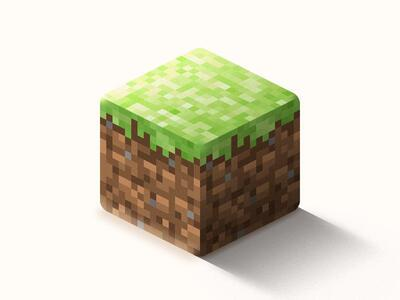
And here are the output videos of the three different AI models, with the prompts used shown in the description.
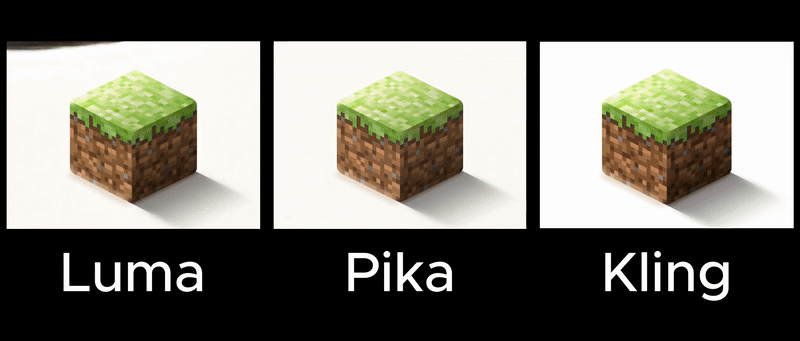
Pika
The result from Pika is amazing, looking just like those trendy "cake or not" videos from a while ago. The hand holding the knife moves smoothly, the knife itself looks good, and the cutting action feels dynamic and lifelike, even leaving cake crumbs on the knife after slicing through the Minecraft grass block. But if you look closely, you'll notice an artifact—the tip of the knife is left in the cake after it's been used to cut it open.
Kling
Kling didn't do so well in this example. Near the end, they cut open the Minecraft grass block, revealing a plain white interior instead of a cake-like one. But the more glaring issue is that midway through the video, it abruptly cuts to a completely different object - a more realistic, cake-like version of the Minecraft grass block. Another problem is that the cut on the object doesn’t align with where the knife is actually cutting.
Luma
Luma did a decent job, although the output isn't as clean as Pika's and has random objects cluttering the video. We see the kitchen knife blade come down, slicing through the Minecraft grass block, and inside, it definitely looks like cake. But after the blade comes down, it seems to vanish, and the finished shape of the object doesn’t line up with where it was cut. There are also some very noticeable artifacts, like random objects falling onto the cake as it’s being sliced.
Overall, Pika certainly takes the cake in this example.
Example 4: Explode It
In this example, we'll use an image of a Joaquin Phoenix Joker figurine.
Below is an image of the Joker Figurine, which we’ll use alongside unique "Explode It" prompts or the Explode It Pikaffect as input for the three AI models we are going to compare.
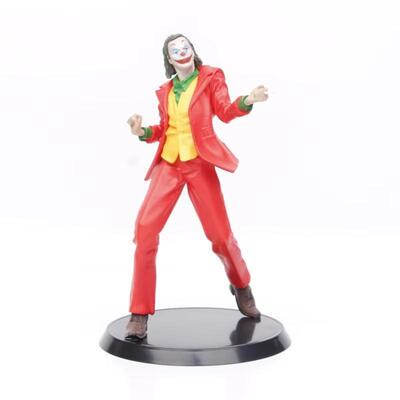
And here are the output videos of the three different AI models, with the prompts used shown in the description.
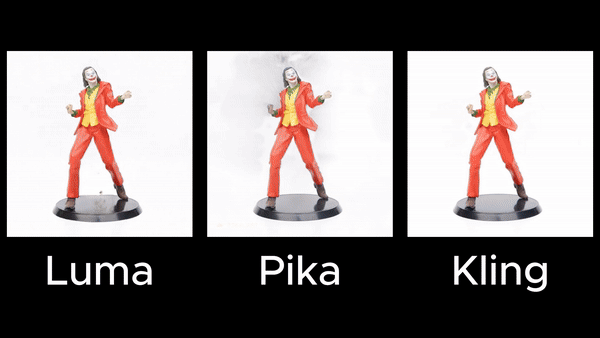
Pika
Pika did a great job in this example. The explosion looks amazing, especially with all the little pieces scattering from the blast. A little impressive detail is that as the Joker figurine exploded, the stand remained untouched. It also looks realistic and closely matches real-world explosion physics.
Kling
Kling’s output was also impressive, though the size of the explosion didn’t quite match Pika’s, with only a small burst at the base of the figurine. It didn't fully adhere to the prompt though, which asked for a static shot of the figurine, but instead, the camera rotates around it. The explosion physics are impressive, closely resembling real-world physics as the small blast knocked off the figurine’s foot and base.
Luma
Luma performed the worst in this example, as the "explosion" didn’t even cause the slightest damage to the figurine. Instead, we notice that there are what seem to be fragments of the figurine flying out, despite the figurine being completely undamaged.
Overall, Pika also outshines both Luma and Kling in this example as well.
Example 5: Squish It
For the fifth example, we are going to use an alien plou plush.
Below is an image of the alien plou plush, which we’ll use alongside unique "Squish It" prompts or the Squish It Pikaffect as input for the three AI models we are going to compare.
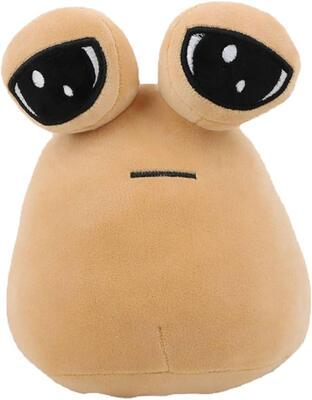
And here are the output videos of the three different AI models, with the prompts used shown in the description.
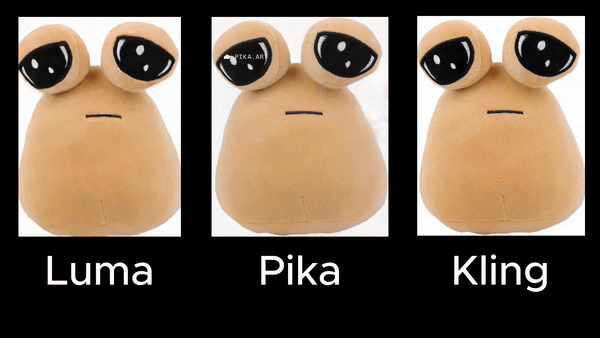
Pika
Pika did a pretty good job in this example, but it doesn’t quite measure up to the quality of the other videos it produced in our prior examples. The squishing effect looks great, as the alien plou plush really seems to get squished realistically. The issue isn’t with how the plush is being squished, but with the hands that does the squishing. When they first appear, it looks like two thumbs are pressing down, which is unnatural since a human’s fingers couldn’t start in that position. Another problem is the fingers pressing on the eyes seem to phase through the plush. Lastly, the pinky fingers look deformed with noticeable bulges.
Kling
While Kling's video gets decent results, it's noticeably more strange than the rest. The first strange thing in the Kling video is when a hand randomly puts a red object on the plush before it disappears abruptly, which is most likely an artifact. Another strange thing is that the hands appear to remove the plush's eyes, and as they detach, the eyes become extremely blurred. The video then proceeds as the hands gently squish the body of the plush. Also, there are no visible deformities present in the hands.
Luma
Luma delivers great results as the human hands squish the mouth of the alien plou plush realistically, with no noticeable issues with how the hands or the plush behave. It’s worth mentioning that, although it has no visible mistakes or artifacts, the motions aren’t as dynamic as Pika’s.
Pika and Luma deliver the best performance overall, with Pika showing more dynamism and Luma making fewer mistakes.
Example 6: Inflate It
For our last example, we are going to use a Squid Game plush.
Below is an image of the squid game plush, which we’ll use alongside unique "Inflate It" prompts or the Inflate It Pikaffect as input for the three AI models we are going to compare.
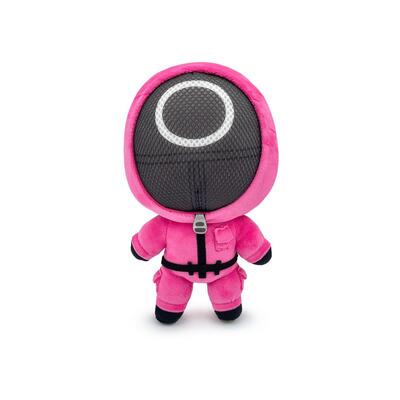
And here are the output videos of the three different AI models, with the prompts used shown in the description.
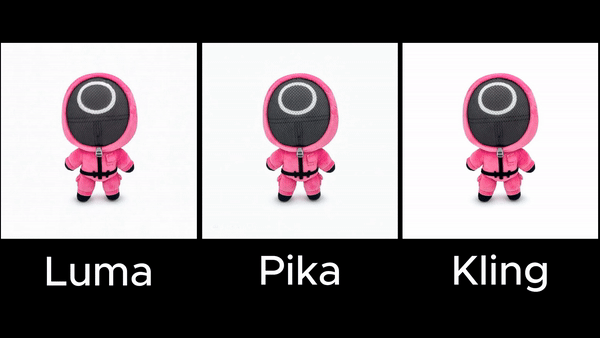
Pika
Pika did a great job with its video output. We can see the Squid Game plush inflating like a balloon and floating away until it vanishes. Another cool detail is how the plush’s shadow follows it as it flies upwards.
Kling
Kling's video started out fine, with the Squid Game plush inflating slightly and hovering off the ground at first, but by the end, it seemed to deflate and fall to the floor, despite the prompt mentioning nothing about deflating or dropping to the ground.
Luma
Luma's video was a decent attempt, but while the plush inflated slightly and tried to float upwards, it didn’t get off the ground. It also didn't fully adhere to the prompt since the plush didn't fly up offscreen.
Overall, Pika delivers the best performance for this example as well.
Our Other Tests
Before we get to our conclusion, let's quickly review the other tests we'veconducted. Although we didn’t include these tests in the main comparison, we hope they'd help you understand how different prompts influence the outcomes, as shown by our tests below.
Crush It
Luma
The following are the other tests we did to recreate the "Crush It" effect using Luma API.
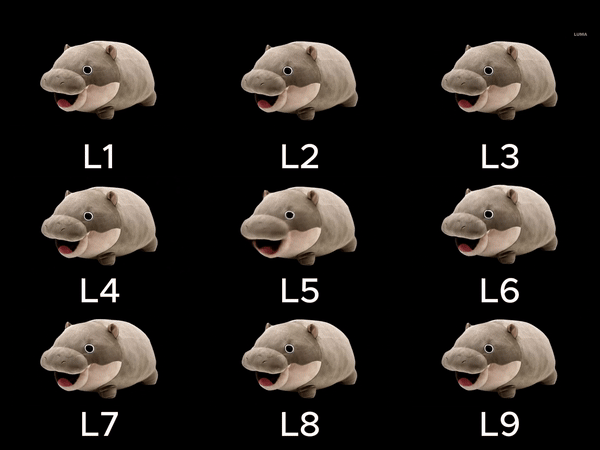
The following are the prompts used:
L1: Hydraulic press crushing a hippo plushie
L2: Hippo plushie gets squished and crushed by a hydraulic press coming from the top
L3: Hippo plushie gets crushed by a hydraulic press coming from the top, flattening the hippo plushie
L4: Hippo plushie gets crushed by the cylinder of the hydraulic press coming from the top, flattening the hippo plushie
L5: Slow-motion close-up of the plush hippo under the hydraulic press. The soft fabric starts to compress, with subtle creases forming. Gentle lighting highlights the squishy texture. Tension builds as the press lowers. Playful, oddly satisfying.
L6: Hydraulic press crushens and flattens Hippo Plushie, leaving it becoming flatand the hydraulic press crushing it from the top
L7: hippo plushie gets crushed and becomes flattened
L8: still hippo plushie gets crushed and becomes flattened
L9: Static camera shot of the hippo plushie getting crushed by a heavy object, it's body flattening, pressure is being applied to it's soft body, by the end it should be a flatter version if itself.
Kling
The following are the other tests we did to recreate the "Crush It" effect using Kling API.
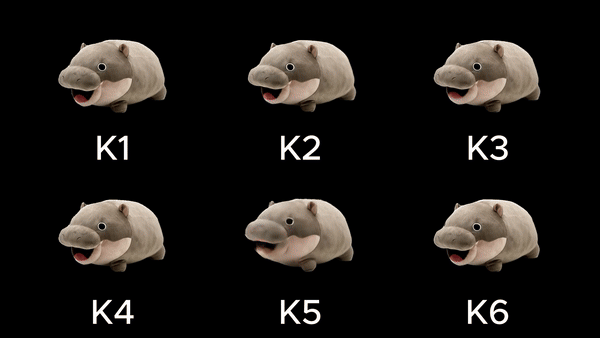
The following are the prompts used:
K1: Hydraulic press crushing hippo plushie, flattening it
K2: Hydraulic press cylinder crushing hippo plushie, flattening it, it is beng flattened as like how clay is flattened. Satisfying and relaxing mood.
K3: Hydraulic press cylinder crushing hippo plushie, flattening it, it is beng flattened as like how clay is flattened. Satisfying mood.
K4: Hydraulic press cylinder crushing hippo plushie, flattening it, it is beng flattened as like how cay is flattened. Satisfying mood.
K5: Static camera shot of the hippo plushie getting crushed by a heavy object, it's body flattening, pressure is being applied to it's soft body, by the end it should be a flatter version if itself.
K6: Hippo plush gets crushed by a heavy object, as it body flattens and becomes a squished version of itself
Melt It
Luma
The following are the other tests we did to recreate the "Melt It" effect using Luma API.
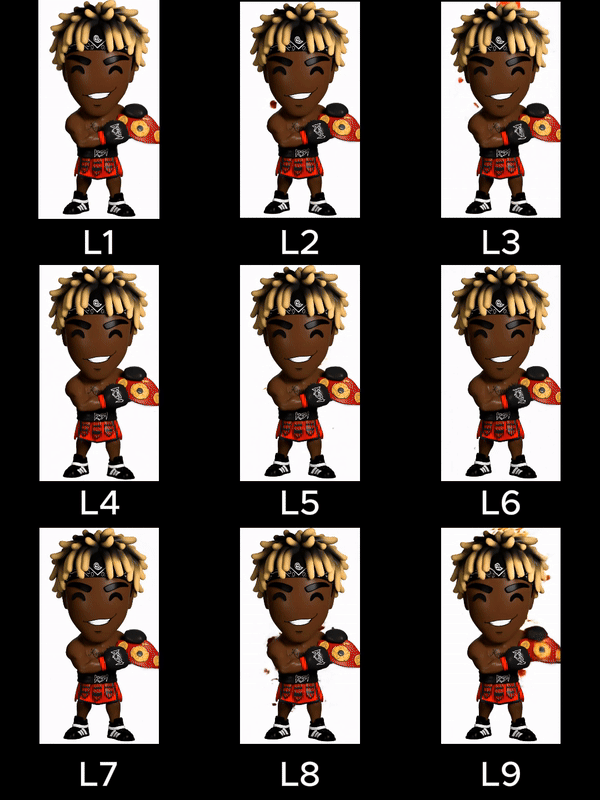
The following are the prompts used:
L1: A Figurine Being Melted
L2: The Figurine melting into a liquid form
L3: The Figurine melting into a liquid form and ends up as a liquid puddle on the floor
L4: The Figurine melting into a liquid form due to extreme heat and ends up as a liquid puddle on the floor
L5: Static camera shot of the figurine completely melting into liquid form and becoming a puddle on the ground
L6: Static camera shot of the entire figurine melting into liquid form and becoming a puddle on the ground. The figurine is melting similar to the way ice melts and becomes a liquid
L7: Static camera shot of the figurine of the man melting into a flowing liquid form like water and becoming a puddle on the ground. The figurine is melting similar to the way plastic melts when exposed to high temperatures and becomes a liquid. At the end of the video the figurine is completely turned into liquid.
L8: Static camera shot of the whole body of the figurine completely melting fast into liquid form and the whole figurine becomes a puddle on the ground
L9: Static camera shot of the whole body of the figurine completely melting fast into liquid form and the whole figurine becomes a puddle on the ground. The liquid is on the floor as all the liquid drops to the ground and becomes a puddle
Kling
The following are the other tests we did to recreate the "Melt It" effect using Kling API.
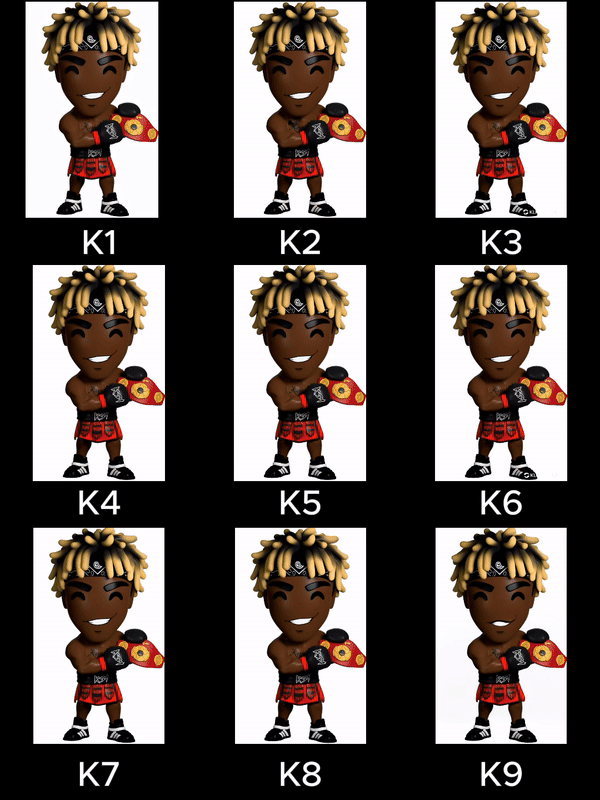
The following are the prompts used:
K1: Static camera shot of the figurine melting into a puddle
K2: Static camera shot of the figurine of the man melting into liquid form and becoming a puddle. The figurine is melting similar to the way plastic melts when exposed to high temperatures and becomes a liquid. At the end of the video, the figurine is completely turned into a liquid puddle.
K3: Static camera shot of the figurine of the man melting into liquid form and becoming a puddle. The figurine is melting similar to the way plastic melts when exposed to high temperatures and becomes a liquid. At the end of the video, the figurine is completely turned into a liquid puddle.
K4: Static camera shot of the figurine melting completely in its entirety into liquid form and becoming a puddle. The figurine is melting similar to the way plastic melts when exposed to high temperatures and becomes a liquid. At the end of the video, the figurine is completely turned into a liquid puddle.
K5:Static camera shot of the figurine of a black man melting completely in its entirety into liquid form and becoming a puddle. The figurine is melting similar to the way plastic melts when exposed to high temperatures and becomes a liquid. At the end of the video, the figurine is completely turned into a liquid puddle.
K6: Static camera shot of the whole body of the figuring completely melting into liquid from and resulting in a puddle on the ground
K7: Static camera shot of the whole body of the figurine completely melting fast into liquid form and the whole figurine becomes a puddle on the ground
K8: Static camera shot of the whole body of the man completely melting fast into liquid form and the whole man becomes a puddle on the ground
K9: Static camera shot of the whole body of the figuring completely melting quickly into liquid from and resulting in a puddle on the ground as the final result
Cakeify It
Luma
The following are the other tests we did to recreate the "Cakeify It" effect using Luma API.
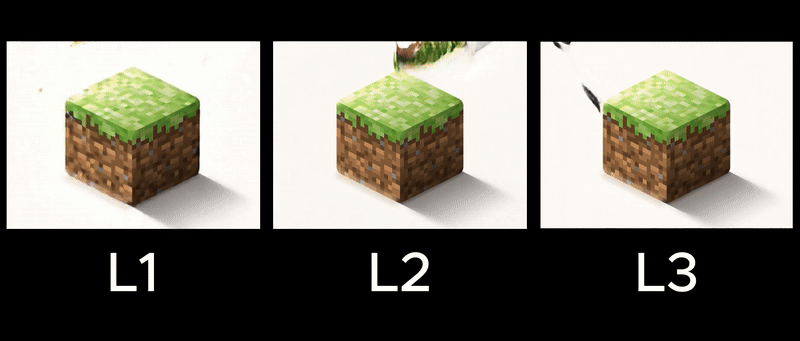
The following are the prompts used:
L1: Knife cutting through the minecraft grass block and revealing that it is a cake
L2: realistic clean video of a kitchen knife cutting through the minecraft grass block and cutting it open, with the insides being cake
L3: Knife cutting through the mincraft grass block, cutting it open, the inside of the minecraft grass block is cake
Kling
The following are the other tests we did to recreate the "Cakeify It" effect using Kling API.
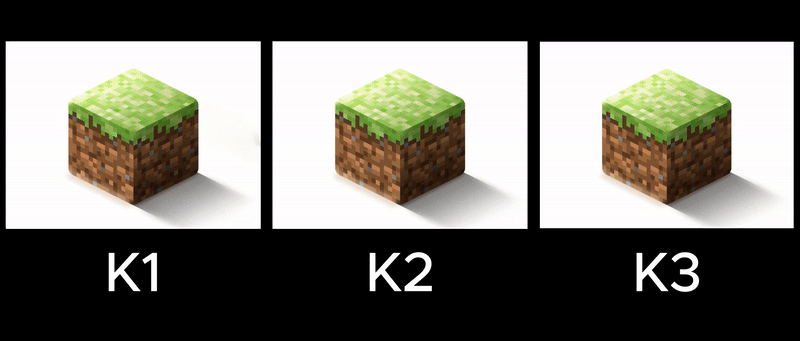
The following are the prompts used:
K1: Kitchen knife cutting open the minecraft grass block, revealing the inside being cake
K2: realistic video of a kitchen knife coming down cutting through the minecraft grass block and cutting it open, with the insides revealed to be cake
K3: realistic video of a kitchen knife cutting the middle of the minecraft grass block, splitting it in half, the insides of the minecraft grass block is cake
Explode It
Luma
The following are the other tests we did to recreate the "Explode It" effect using Luma API.
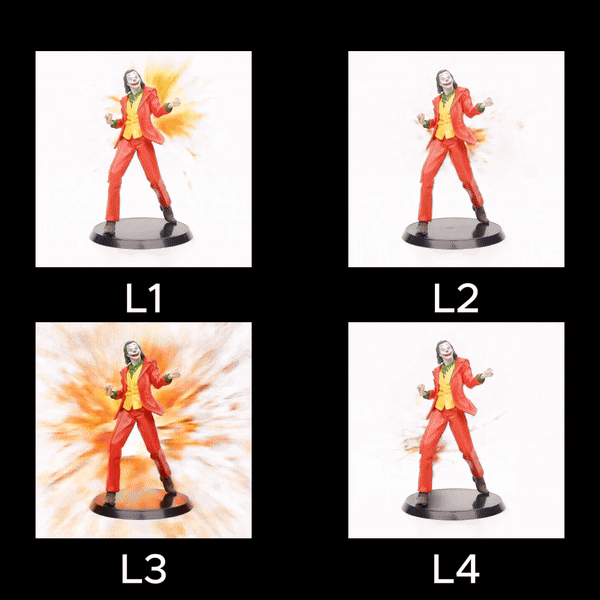
The following are the prompts used:
L1: The joker figurine explodes
L2: the joker figurine explodes into tiny pieces all flying away from the explosion
L3: the joker figurine breaks apart and explodes into tiny pieces all flying away from the explosion
L4: the joker figurine breaks apart and explodes. resulting in tiny pieces of the figurine flying everywhere. The figurine is not seen anymore by the end of the video since it has exploded
Kling
The following are the other tests we did to recreate the "Explode It" effect using Kling API.
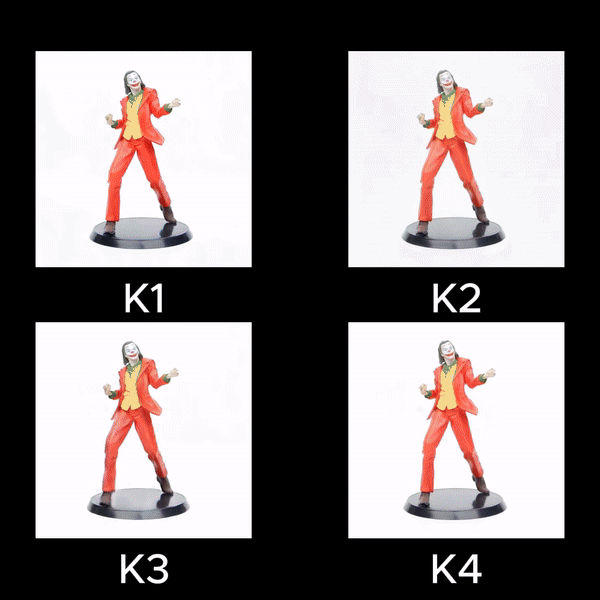
The following are the prompts used:
K1: joker figurine exploding
K2: the figurine explodes into small pieces
K3: static shot of the figurine as it explodes into small pieces
K4: static slow-motion shot of the figurine as it explodes into tiny shards that fly away from the explosion
Squish It
Luma
The following are the other tests we did to recreate the "Squish It" effect using Luma API.
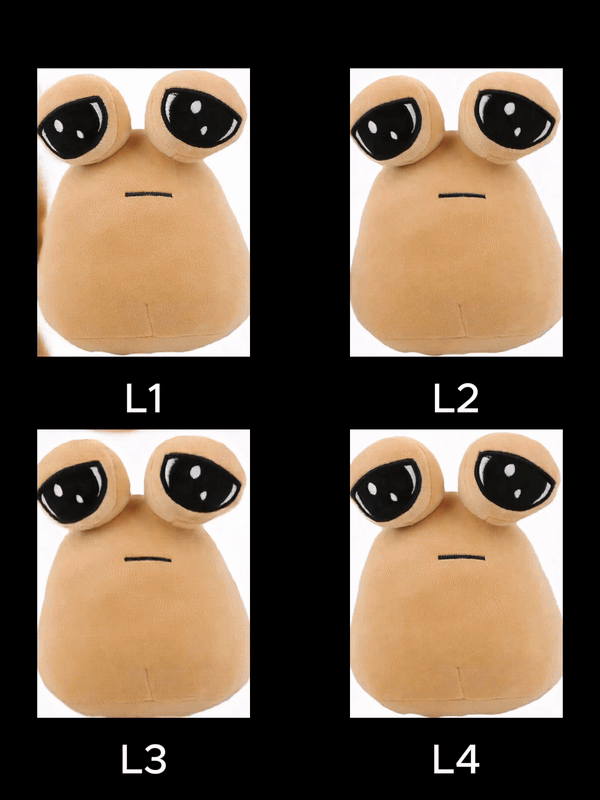
The following are the prompts used:
L1: two hands come in and squish the plushie
L2: First person view of a pair of hands coming in and squishing the plushie
L3: a pair of hands coming in and squishing the plushie, playing with it as if it was clay
L4: a pair of hands coming in and squishing the plushie, the plushie morphs as if it were made out of clay when being squished
Kling
The following are the other tests we did to recreate the "Squish It" effect using Kling API.
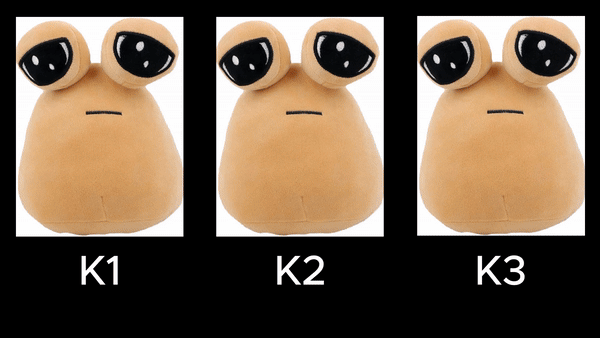
The following are the prompts used:
K1: a pair of hands coming in and squishing the plushie
K2: a pair of hands coming in and squishing the plushie, playing with it as if it was clay
K3: a pair of hands coming in and squishing the plushie, playing with it and squishing it, the plushie being squished into a more sphere like object
Inflate It
Luma
The following are the other tests we did to recreate the "Inflate It" effect using Luma API.
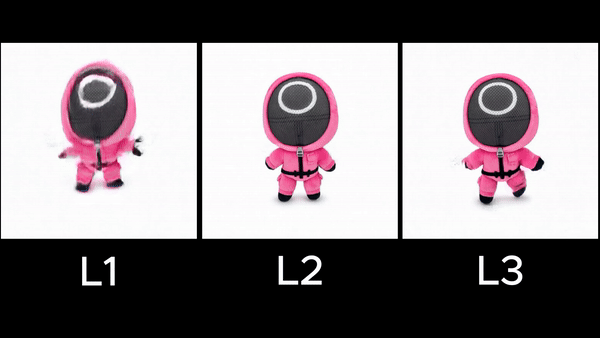
The following are the prompts used:
L1: the plushie inflates and floats up like a balloon
L2: static camera shot as the plushie bloats and inflates, flying up like a balloon
L3: static camera shot as the plushie bloats and inflates, floating up like a balloon
Kling
The following are the other tests we did to recreate the "Inflate It" effect using Kling API.
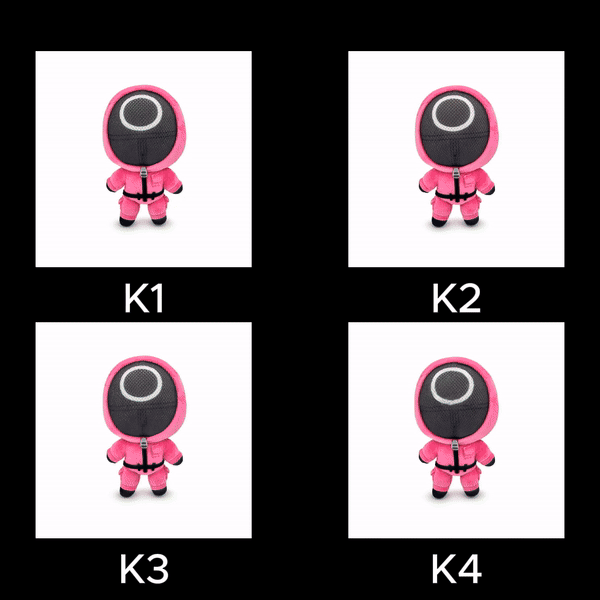
The following are the prompts used:
K1: the plushie bloats and inflates, as it flies up like a balloon
K2: static camera shot as the plushie bloats and inflates, flying up offscreen like a balloon
K3: static camera shot as the plushie bloats and inflate flying up like a balloon
K4: static camera shot as the plushie inflates and flies up like a balloon
Conclusion
From looking at the six effect examples above, it's clear that Pika 1.5 easily outperforms both Luma and Kling. But depending on the example, Kling API or Luma API can deliver a similar level of quality, as shown in examples 2 and 5.
However, we need to keep in mind that this applies only to these six specific special effects, likely because Pika Labs has optimized their AI for these particular "Pikaffects".
That being said, we're eager to see where AI image-to-video technology goes next, and we’re hoping for even more types of fun and visually pleasing special effects like the ones shown above.
We hope that you have found this comparison useful!
And if you are interested, check out our collection of generative AI APIs from PiAPI!
